Para Road, Nuriootpa
B 1877 Gebrüder Walter Guhrau Pr, Schliesen (opus 118);
inst c.1888 St Petri Lutheran Church, Nuriootpa;
inst 1966 present loc; res 1988 Roger Jones.
2 manuals, 7 speaking stops, 3 couplers, tracker
Hw: 16.8.8.4. Ow: 8.4. Ped: 16.
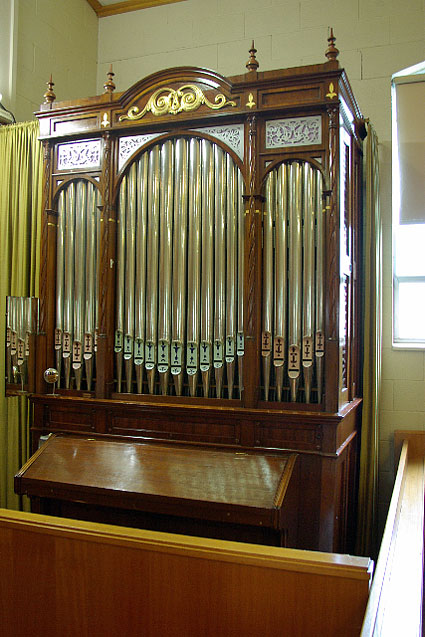
Photo: PdL (Oct 2009)
Roger Jones advises (August 2007):
"I restored this organ in 1989. The silver frost was removed from the pipes and the original decoration redone to pipes and fretwork. Compass: CC to top note chromatic (no rollerboard). A similar organ by the same builder is located at St Paul's retreat Glen Osmond, with one manual and pedals." This latter instrument has been unplayable for many years. [David Shield, April 2009]
From Historic Organs of the Barossa Valley, Volume 2:
Before 1958, members of this congregation attended St Paul's, Tanunda. Members of the Evangelical Lutheran Church of Australia Synod, their numbers grew enabling a new church and hall to be built in Nuriootpa and be dedicated on 17 July, 1960.
The pipe organ was built at Guhrau, Silesia, by the Walter Brothers, and was procured for the St Petri congregation in 1887 where it served for many years before being transferred to Holy Trinity in 1967. It is notable for its beautifully voiced ranks of tin flutes and its exquisite case.
| Hauptwerk Bordun Principal Portunal Octav Oberwerk Flaute Flaut travers Pedal Subbass Couplers Pedal Koppel Manual Koppel Octav Koppel |
16 8 8 4 8 4 16 |
TC added later |
Compass: 54/27
Mechanical action
located rear of north side.
From
the 2009 OHTA Conference Book,
David Shield writes:
The
congregation at Holy Trinity has had a relatively short history, being formed
in 1958. From foundation to 1974,
individuals and families were members of the St Paul’s congregation in
Tanunda. The organ, on the other
hand, has had a much longer one.
Originally imported from Germany by Jacob Witkowski in 1887, it saw
service at St Petri Lutheran Church here in Nuriootpa for almost the next 80
years, before being displaced by a larger instrument in a new building. It was purchased by Holy Trinity in
1966.
Six
Nuriootpa families, all members of the St Paul’s congregation in Tanunda,
formed the nucleus of what is now Holy Trinity. This group held occasional services in the old Methodist
church from April 1925 to 1926, being ministered to by C.H. Wiebush from
Tanunda, Concordia seminary students, or E. Fischer from Kapunda. The Methodists had owned a block of
land in Nuriootpa from 1854 but it was not until 1901 a small wood and iron
building was erected in Second Street Nuriootpa. The current Coulthard Memorial Uniting Church was opened in
November 1936.
In
1926-27, services were suspended while the people of St Paul’s planned and
built their new church in Tanunda.
Like those in Nuriootpa they had been meeting in homes from early in the
century, had grown in numbers to rent then purchase a small church, and expanded
further to require a larger building.
Occasional services resumed in 1927 and became more regular from October
1942 when services moved to the Nuriootpa Institute. These were supplanted in September 1947 with weekly
services, now held in the new Methodist Church financed by William Coulthard.
As
elsewhere, the numbers grew and on 2 November 1958 the Holy Trinity Evangelical
Lutheran Congregation was formed.
Two years previously E. Nuske had purchased Coulthard’s cattle yards and
donated it as a site for a future church.
This was realised with the current building being dedicated on 17 July
1960. Trinity and St Paul’s
operated as a parish. In December
1974, there was a realignment of the parish and ties with St Paul’s in Tanunda
were severed.1
The
organ is one of only two such organs extant in South Australia, both imported
by Jacob Witkowski. Witkowski and
his wife arrived in South Australia in March 1847, nominating himself as a
farmer for naturalization purposes three years later. Rather than move to Hoffnungstahl as many of his fellow
travellers did, he chose to remain in Adelaide living first in North Terrace
and, by 1864, in King William Street, Kent Town. In early years he was called an ironmonger, general dealer,
broker and auctioneer, but from 1870 he became predominantly an importer and
music seller. Harmoniums by Traser
and Alexandre, cabinet organs from Mason & Hamlin, and pianos from Blaedel
and Gerhardt were available. He
became sole agent for Beatty’s Golden-Tongued American Organs. Adelaide assessment records also show
he was the landlord for a number of properties in North Terrace and Pulteney
Streets. He died on 1 May 1885 and
is buried in the Walkerville Cemetery.2 Though not thought to be many, it is unclear how many
instruments Witkowski imported.
The media reported two instruments in February of 1877, pipes of both
being exclusively of metal. In May
a further report describes an instrument more closely identifiable with that
now at Holy Trinity.3
It is known that the Wesleyan Methodist Church at Alberton purchased an
instrument from Witkowski in 1878.4 This instrument, opus 115, is now to be found at St Paul’s
Retreat, Urrbrae. A further instrument was advertised for sale in April 1879.5
Exactly
which instrument came to St Petri in 1887 requires further research. Suffice it to say that the organ became
redundant with the growth of the congregation and need to construct a new
building, designed by Sir Eric von Schramek, in 1966-67. It was subsequently sold to Holy
Trinity at a final cost of $1518 and dedicated on 20 March 1966.
Stiller
noted in 1979 that a super octave coupler for the Hauptwerk had been added in
1966 and also that tuning slides had been added to the pipework. At some time the general swell and a
device for exhausting the wind at the discretion of the performer had also been
removed. Of note is the rare
Portunal stop and the medallions referring
to exhibition prizes won by the builders.6
In
January 1988, a complete overhaul of the action, wind chests, casework and
pipework, including exposure of the original decoration, was undertaken by
Roger Jones at a cost of $6000.
The organ was rededicated 15 May 1988.7
Gebrüder Walter, Guhrau Pr. Schlesien (Silesia)
opus 118
2 manuals, 7 speaking stops, mechanical action
|
HAUPTWERK |
|
|
|
Bourdon |
16 |
|
|
Principal |
8 |
|
|
Portunal |
8 |
|
|
Octav |
4 |
|
|
Manual Coppel |
|
|
|
Octave Coppel * |
|
|
|
|
|
|
|
OBERWERK |
|
|
|
Flaute |
8 |
|
|
Flaut
Travers |
4 |
|
|
|
|
|
|
PEDAL |
|
|
|
Sub
Bass |
16 |
|
|
Pedal
Coppel |
|
* added in 1967
Mahogany
casework of Corinthian design
Compass
54/27
Attached
drawknob console; knobs with porcelain labels
_________________________________________________________________________
1 Information extracted
from church pamphlets for Holy Trinity Lutheran Church Nuriootpa c.1994, and St
Paul’s Lutheran Church Tanunda –A Brief History 1904-200
4
2 Research Notes D.
Shield
3 Register, 27 February 1877, p.6.6; Advertiser, 4 May 1877, p.5.3
4 Alberton Wesleyan
Methodist Church Trustee Minutes -
State Library South Australia, SRG 4 28/1, quarterly payments to Witkowski from
30 April 1878; Register, 5 March 1878, p.5.2. An opus list for the Walter firm appears at:
http://dirk.steindorf-sabath.eu/Guhrau_182_Orgelbauanstalt%20Walter.pdf These
were the only instruments built by the firm for locations outside Europe.
5 The Christian
Colonist, 4 April 1879, p.6.3
6 Stiller, J., Documentation
Holy Trinity Lutheran Church Nuriootpa Organ 21 October and 21 December 1979, p.1
7 OHTA News, vol 12, no 1 (January 1988), p.9; ibid., vol 12
no 3 (July 1988), pp.16, 25;
pamphlet Holy Trinity, op.cit.
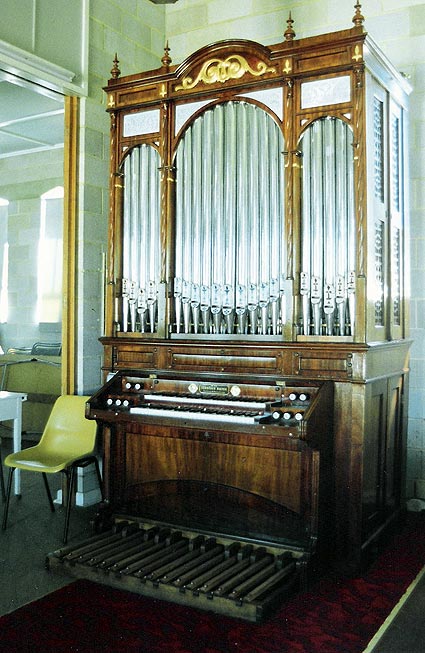
Photo: Roger Jones (2000)

Photo: Trevor Bunning
(Newton Williams playing)
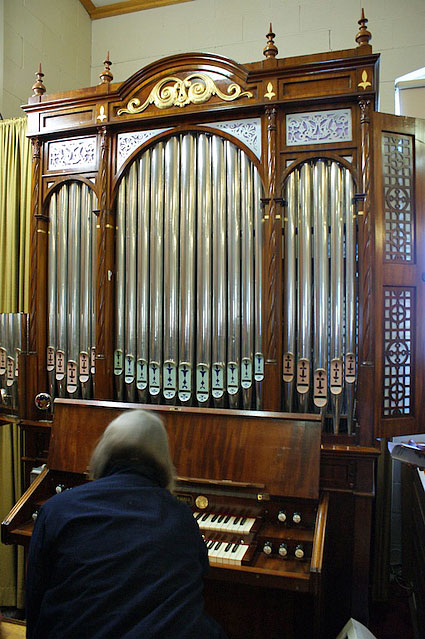

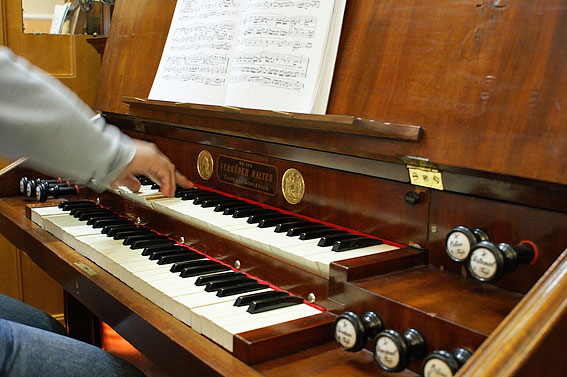

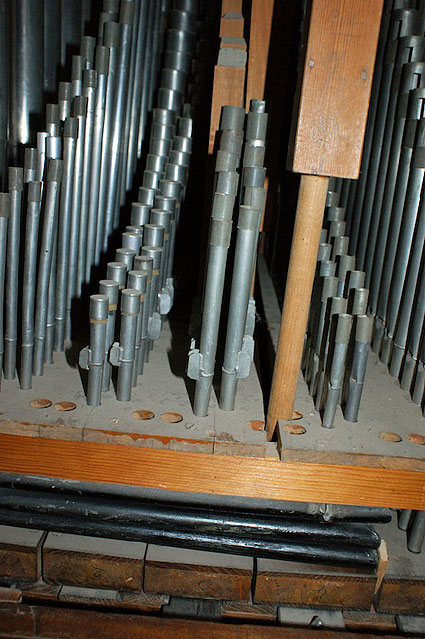
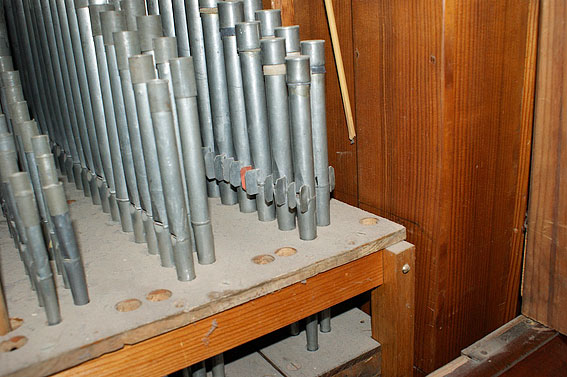
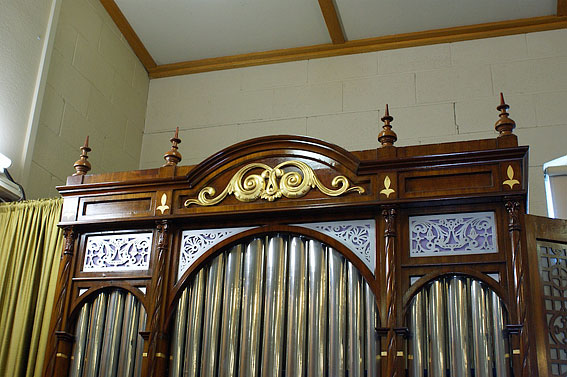
Photos: Rodney Ford (Oct 2009)
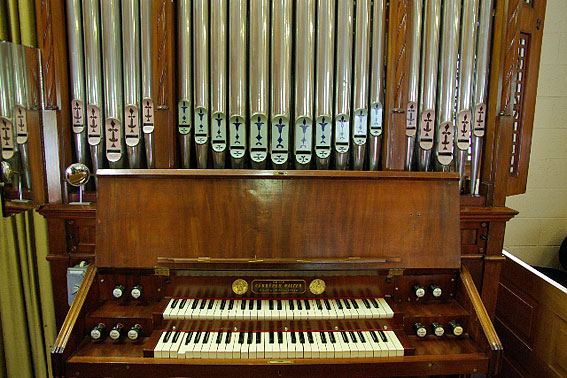
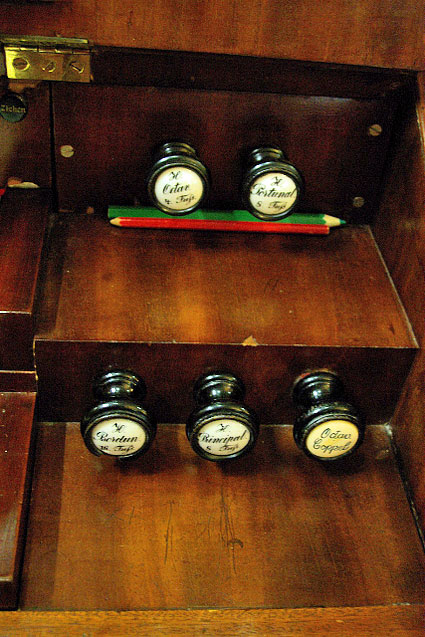
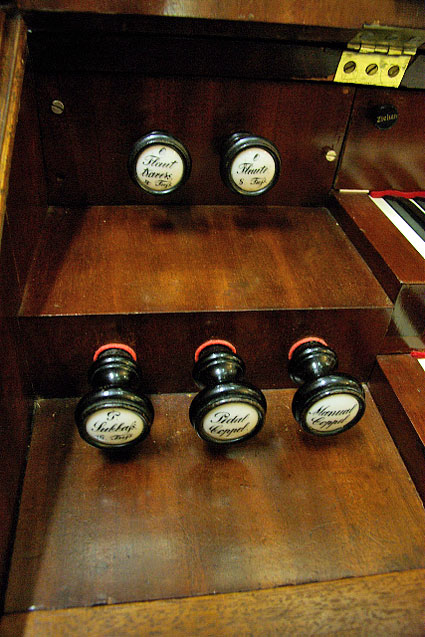
Photos: PdL (Oct 2009)